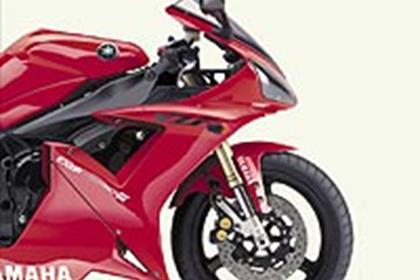Here it is… the 2002 R1
Yamaha’s 2002 R1 will be faster, more powerful and even lighter than the current bike in response to Suzuki’s GSX-R1000 and the challenge of Honda’s revamped 2002 FireBlade.
MCN’s exclusive computer-generated image is based on factory information and we believe it to be a near-perfect representation of how the bike will look.
The styling might not be a revolutionary step forward, but look closely and you’ll see almost nothing has been left unchanged.
The frame, swingarm, suspension and brakes are totally new, while the engine has been heavily modified to help boost power. And while the bike is still instantly recognisable as an R1, the plastics are actually all new.
The chassis has received the most work in an effort to make the handling even sharper than the current bike and make it easier for riders to cope with the huge amount of power.
Although the frame rails appear to be a similar shape to the current ones, the chassis is actually completely new and is expected to go under the name ” Deltabox III ” in place of the current Deltabox II.
Insiders claim the frame is 30 per cent stiffer than the current design, and around 600g lighter. As on today’s bike, the engine is a structural member, providing much of the chassis’ strength.
The alloy swingarm is also new – with an asymmetrical design to allow the exhaust system to be tucked in closer, increasing the bike’s ground clearance on right hand corners. It’s also stiffer than the current version, but slightly heavier.
The forks are up from 41mm to 43mm in diameter. New internals should improve feedback and allow the suspension to work more efficiently, too.
To help counter some of the extra weight of the new swingarm, Yamaha has opted to fit newly designed, lighter wheels – cutting around 200g off the rear and 100g off the front. These will reduce unsprung weight – allowing the suspension to work better. Lighter wheels also help a bike accelerate, brake and turn faster.
Despite the new chassis, Yamaha is clearly happy with the R1’s basic design. The 2002 model will use exactly the same wheelbase as the current bike at 1395mm, and the steering geometry is near identical, with the only change being an increase in trail to aid stability.
However, the riding position has been altered to make the bike easier to ride, with the bars shifted slightly further forwards.
You’ll notice the lower fairing is a completely different shape, with far bigger cut-outs to help engine cooling and reduce the weight of the bodywork. The main air-outlet vents now extend to the rear edge of the fairing, and more of the motor is exposed through the more pronounced cut-out around the engine cases.
The nose is longer and droops more over the front wheel, improving aerodynamics. It’s fitted with newly designed headlights – which retain the fox-eye look but are subtly reshaped to look even more aggressive.
The fuel tank looks lower and slimmer thanks to a plastic cover running along its lower edge, while the seat unit also looks lighter, as the amount of plastic under the seat has been reduced – exposing more of the subframe. The 2001 R1’s twin tail lights are replaced with a single, LED light on the 2002 version.
Yamaha insiders say the firm is opting for bold, plain colour schemes – with options of either plain blue or plain red with very little in the way of graphics – but there will also be a radical black and gold version.
We expect the power to go up by around 2 or 3bhp – bringing the figure up from the current, claimed 150bhp at the crankshaft to around 152-153bhp.
While the power might not be the very best in class, the R1 is expected to get more bottom-end drive thanks to finally getting fuel injection instead of carbs. As well as cutting exhaust emissions, the injection – which is expected to feature a Suzuki-style secondary, computer-controlled throttle butterfly to give a smooth power delivery – should help the engine burn fuel more efficiently throughout the rev-range, giving better power and torque curves.
Yamaha will also fit the bike with a next generation EXUP valve that’s lighter and more efficient than the one on the current R1 – helping give the bike bags of bottom-end grunt without effecting top-end power.
A new airbox design, using lessons learned from the R7 superbike project, should also help improve torque, while the new, bigger bodywork cut-outs mean the temperature under the fairing will be lower, so the engine will be able to suck in cooler, denser air – increasing power and torque. The firm is still not opting for a full-on ram-air system.
The engine will also receive revised internals, including lighter valves to help it rev more freely. The new bike’s instrument panel will include a gear-change indicator.
The R1’s brakes have been revised. While the calipers keep the stiff, lightweight monoblock design of the current bike, the piston covers are now gold rather than blue, and their weight is reduced.
Yamaha have refused to make any official comment on forthcoming changes to the model.
More on this story in MCN, published on Wednesday August 29, 2001


